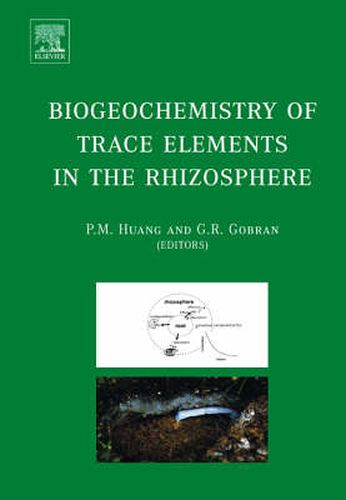Readings Newsletter
Become a Readings Member to make your shopping experience even easier.
Sign in or sign up for free!
You’re not far away from qualifying for FREE standard shipping within Australia
You’ve qualified for FREE standard shipping within Australia
The cart is loading…






The rhizosphere in soil environments refers to the narrow zone of soil influenced by the root and exudates. Microbial populations in the rhizosphere can be 10 - 100 times larger than the populations in the bulk soil. Therefore, the rhizosphere is bathed in root exudates and microbial metabolites and the chemistry and biology at the soil-root interface is governed by biotic (plant roots, microbes) and abiotic (physical and chemical) interactions.
The research on biotic and abiotic interactions in the rhizosphere should, thus, be an issue of intense interest for years to come. This book, which consists of 15 chapters, addresses a variety of issues on fundamentals of microscopic levels and the impact on food chain contamination and the terrestrial ecosystem.
It is an essential reference work for chemists and biologists studying environmental systems, as well as earth, soil and environmental scientists.
$9.00 standard shipping within Australia
FREE standard shipping within Australia for orders over $100.00
Express & International shipping calculated at checkout
Stock availability can be subject to change without notice. We recommend calling the shop or contacting our online team to check availability of low stock items. Please see our Shopping Online page for more details.
The rhizosphere in soil environments refers to the narrow zone of soil influenced by the root and exudates. Microbial populations in the rhizosphere can be 10 - 100 times larger than the populations in the bulk soil. Therefore, the rhizosphere is bathed in root exudates and microbial metabolites and the chemistry and biology at the soil-root interface is governed by biotic (plant roots, microbes) and abiotic (physical and chemical) interactions.
The research on biotic and abiotic interactions in the rhizosphere should, thus, be an issue of intense interest for years to come. This book, which consists of 15 chapters, addresses a variety of issues on fundamentals of microscopic levels and the impact on food chain contamination and the terrestrial ecosystem.
It is an essential reference work for chemists and biologists studying environmental systems, as well as earth, soil and environmental scientists.